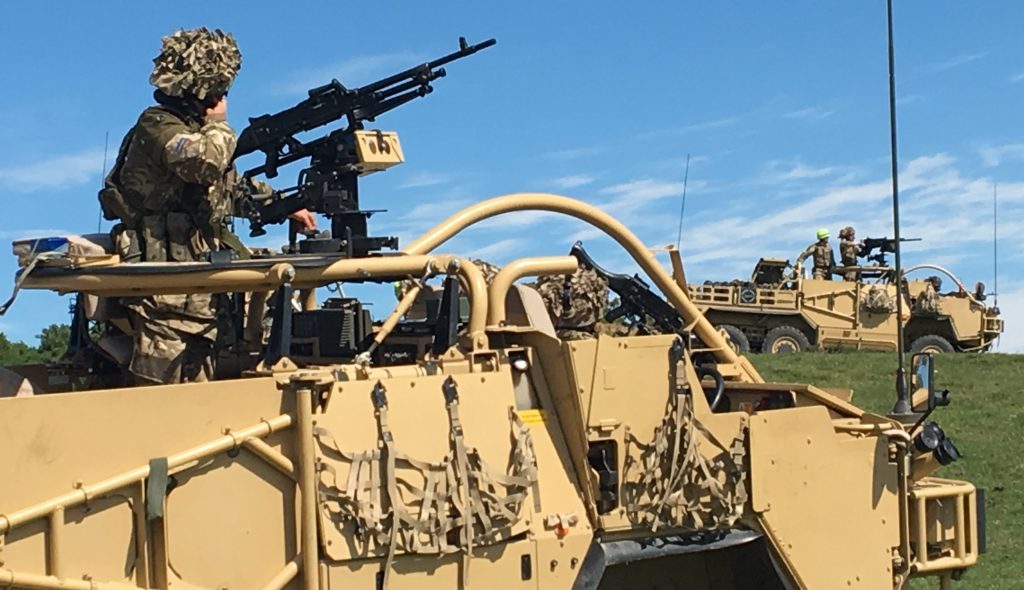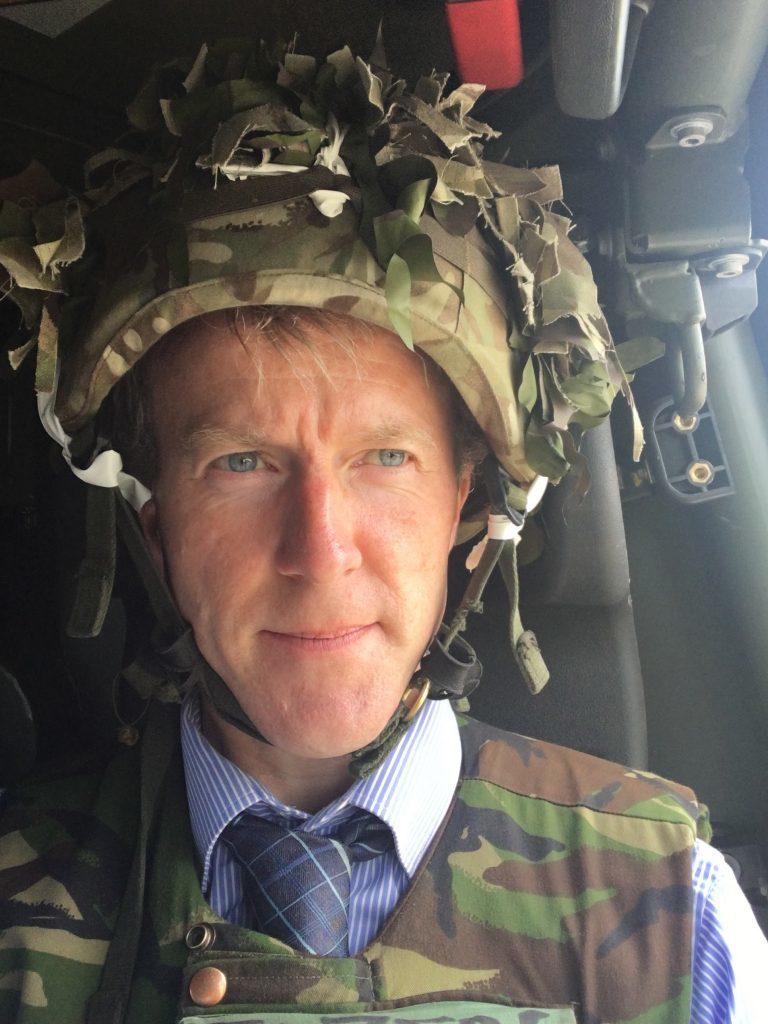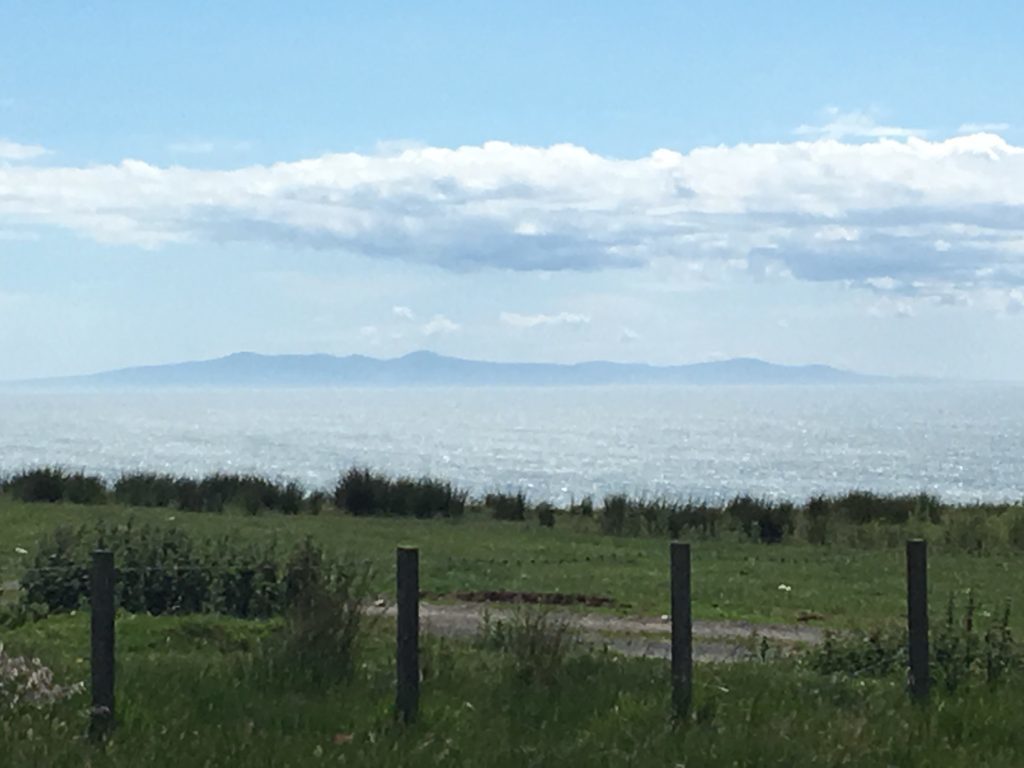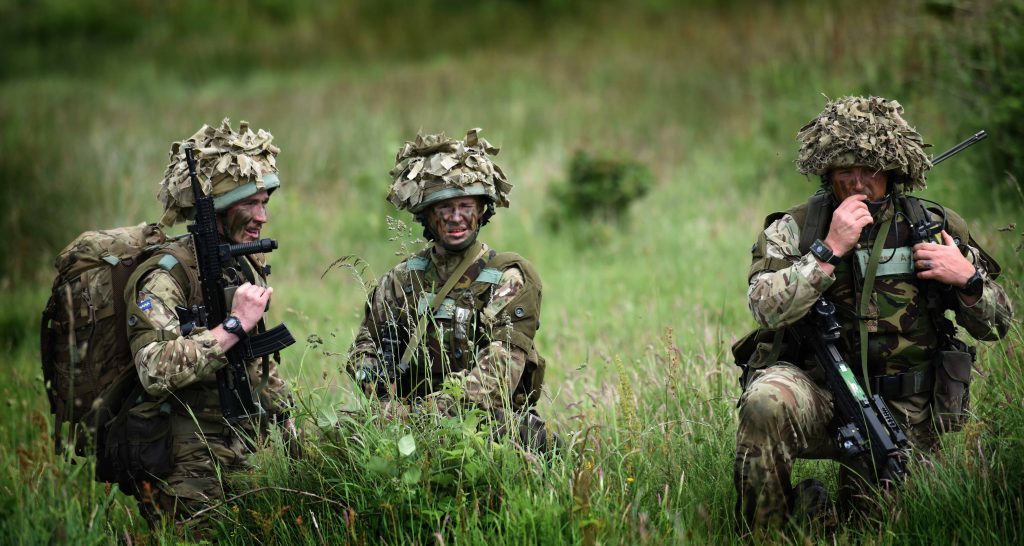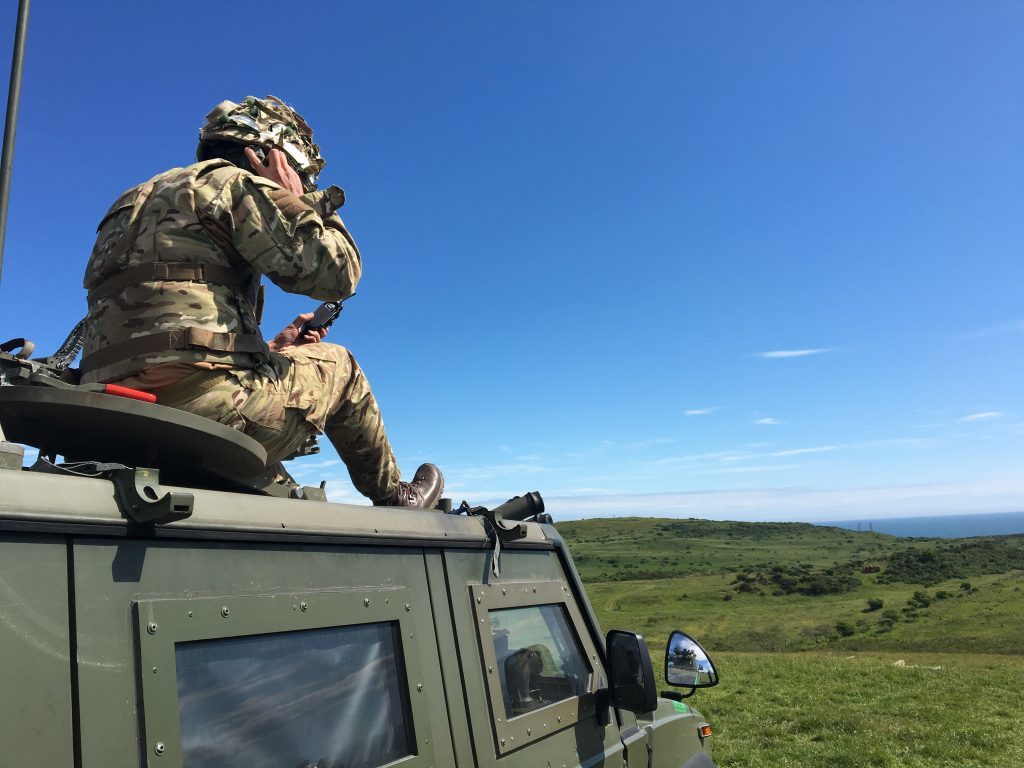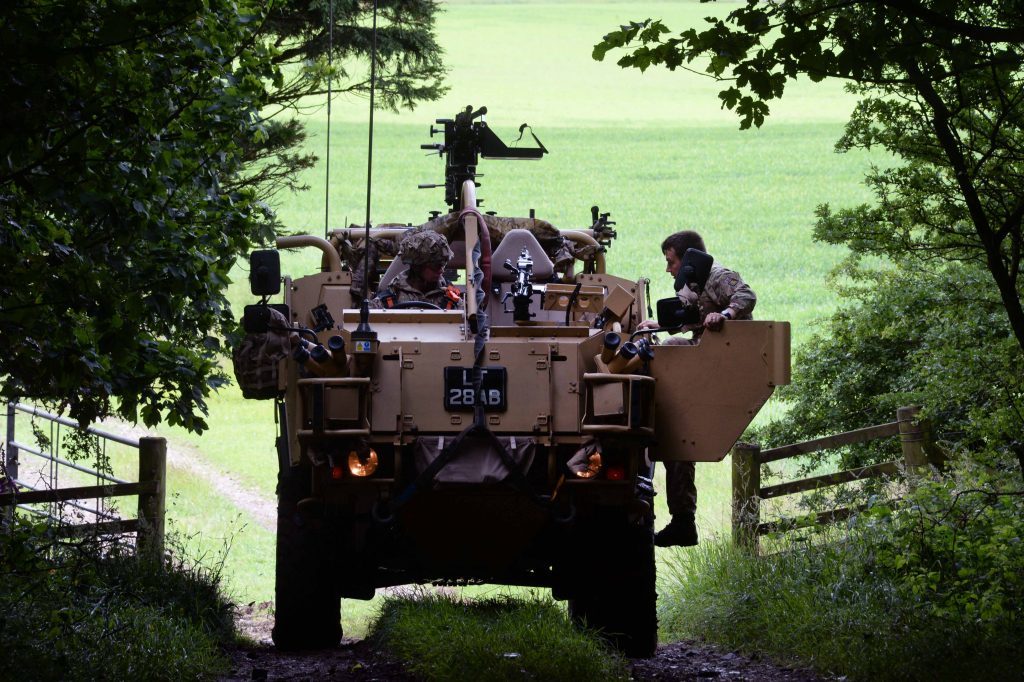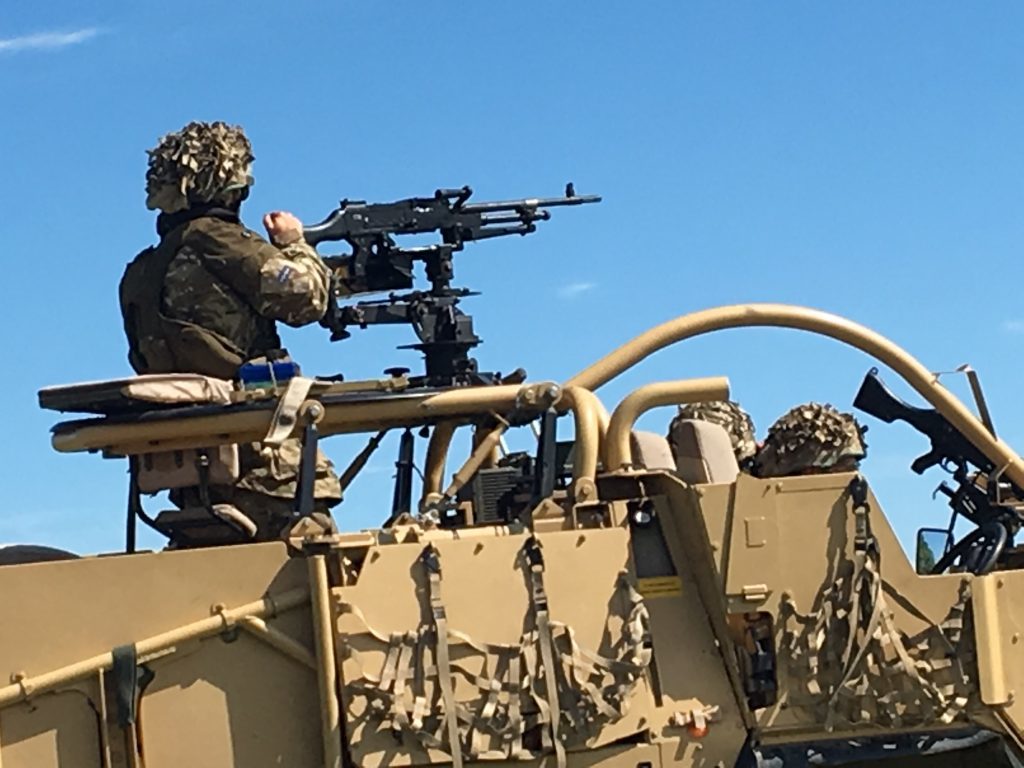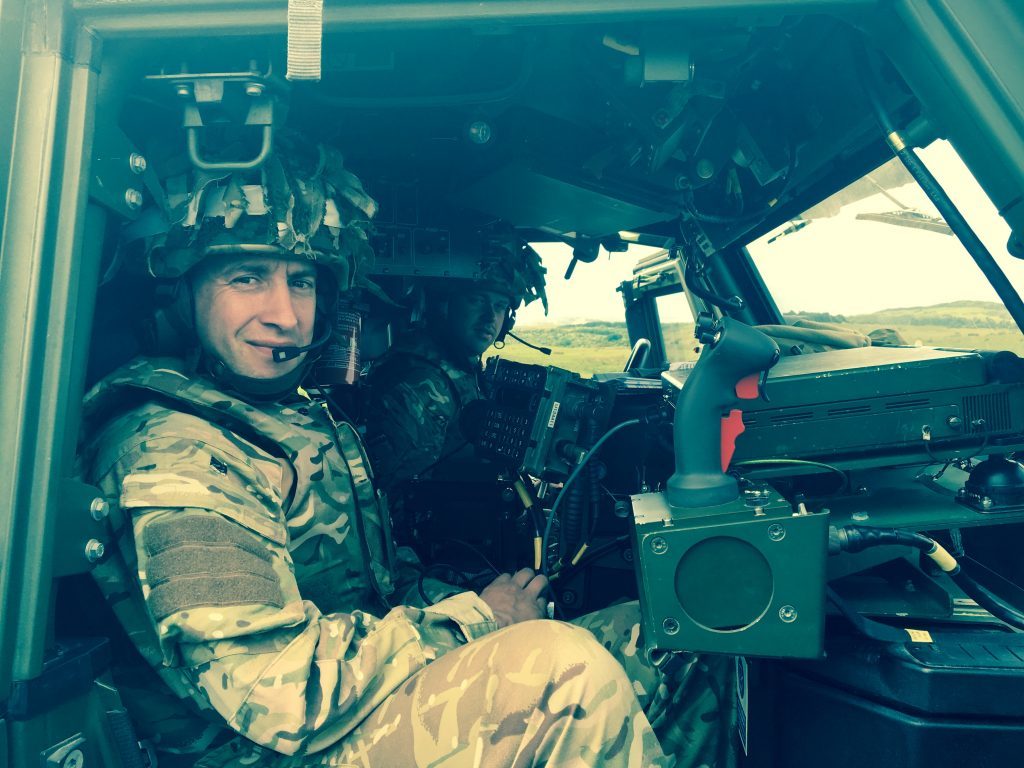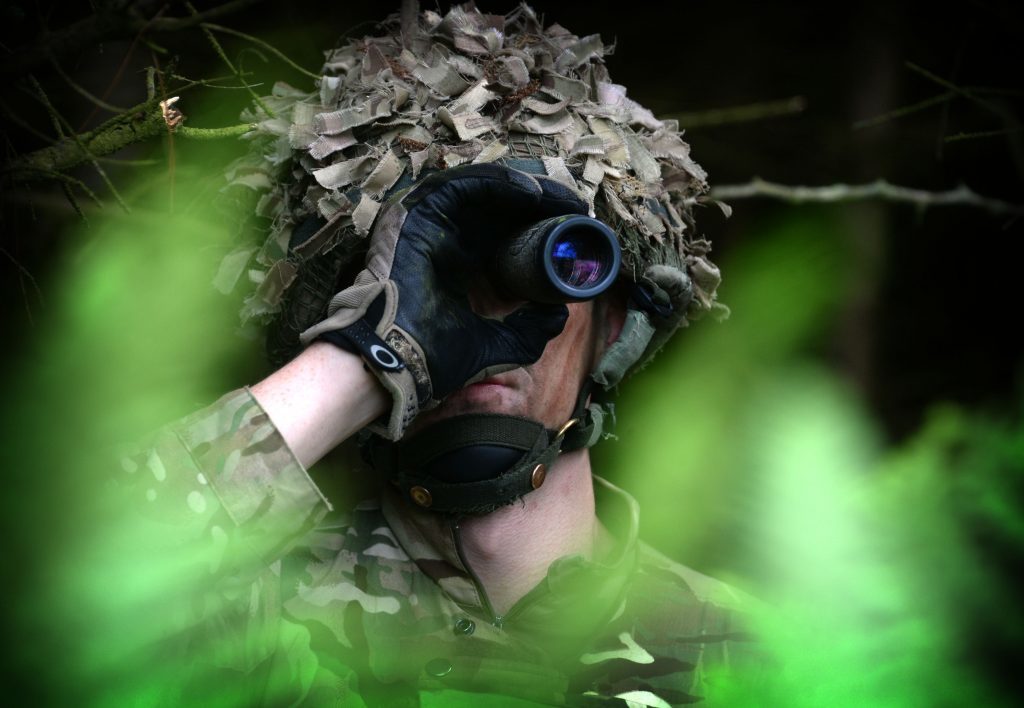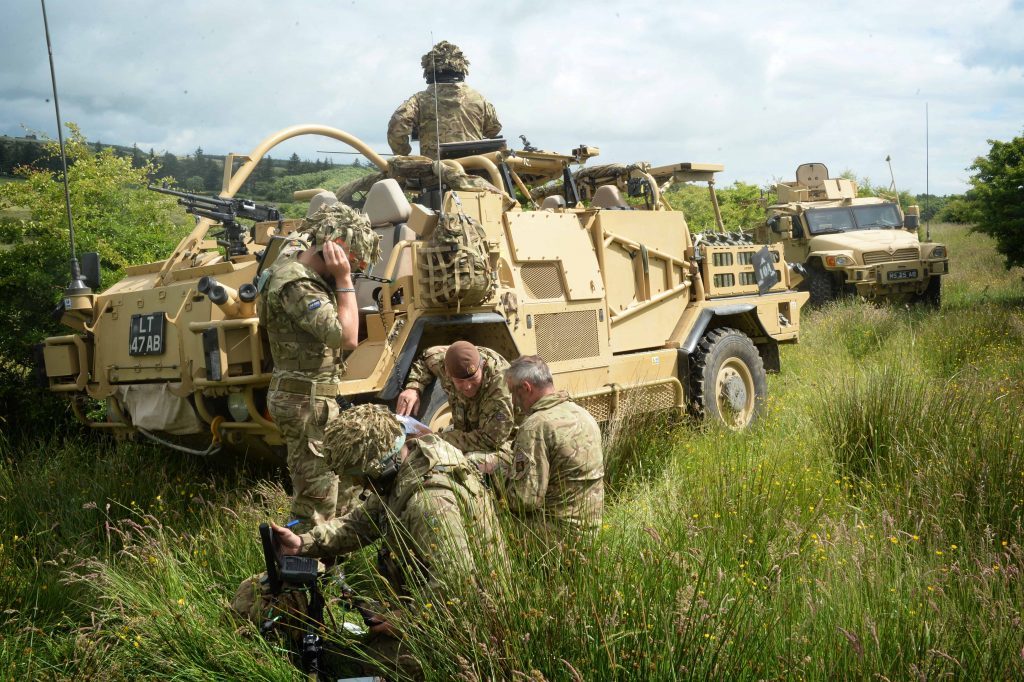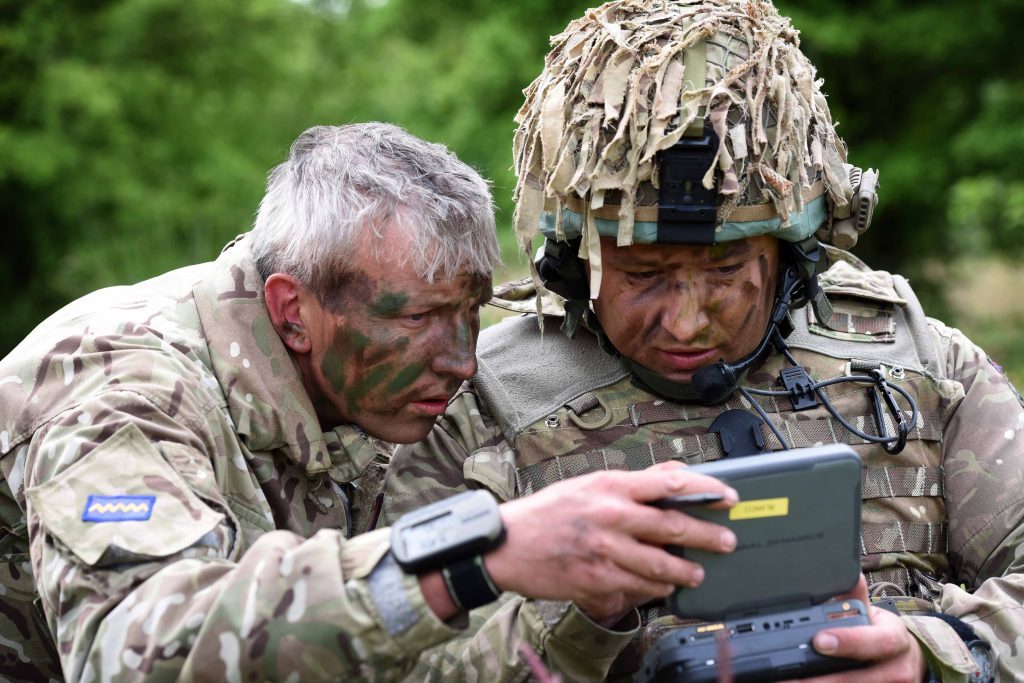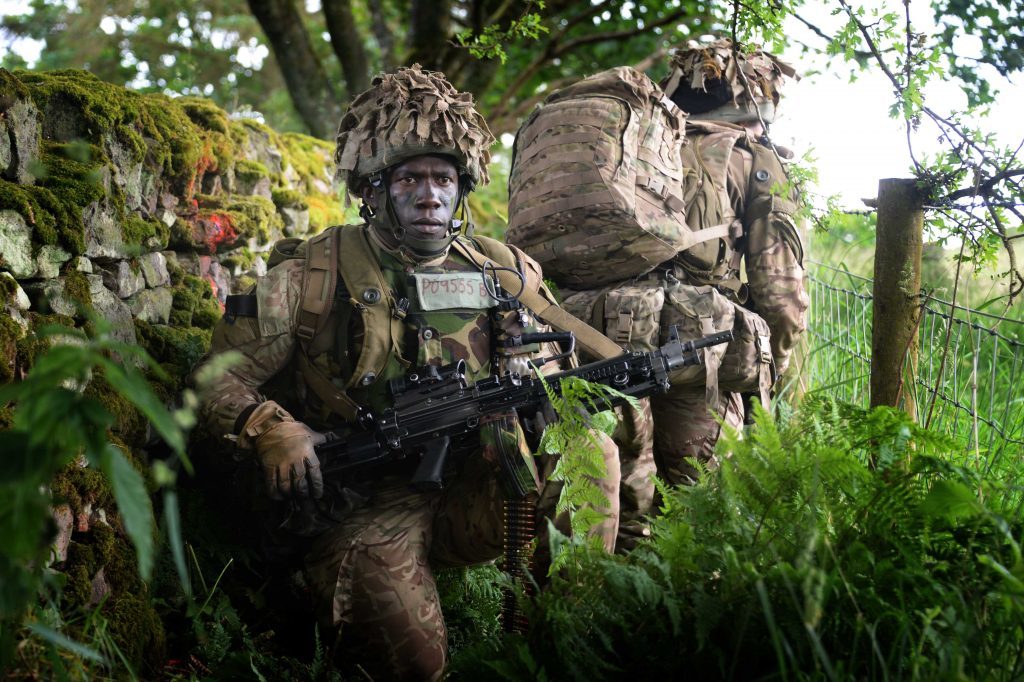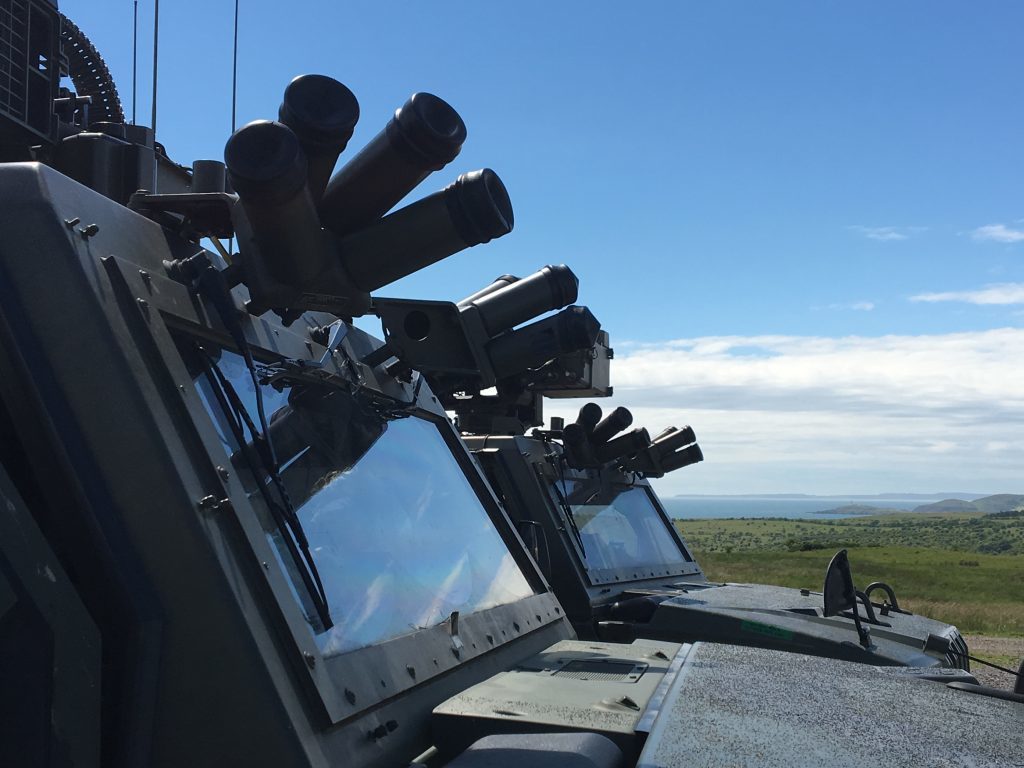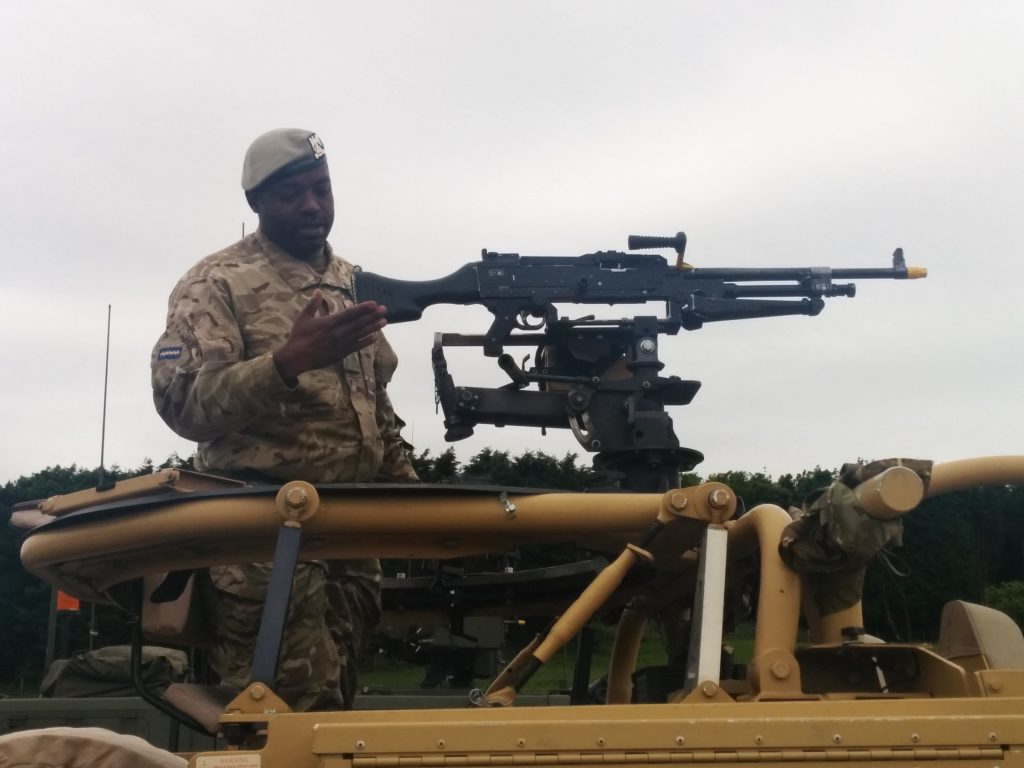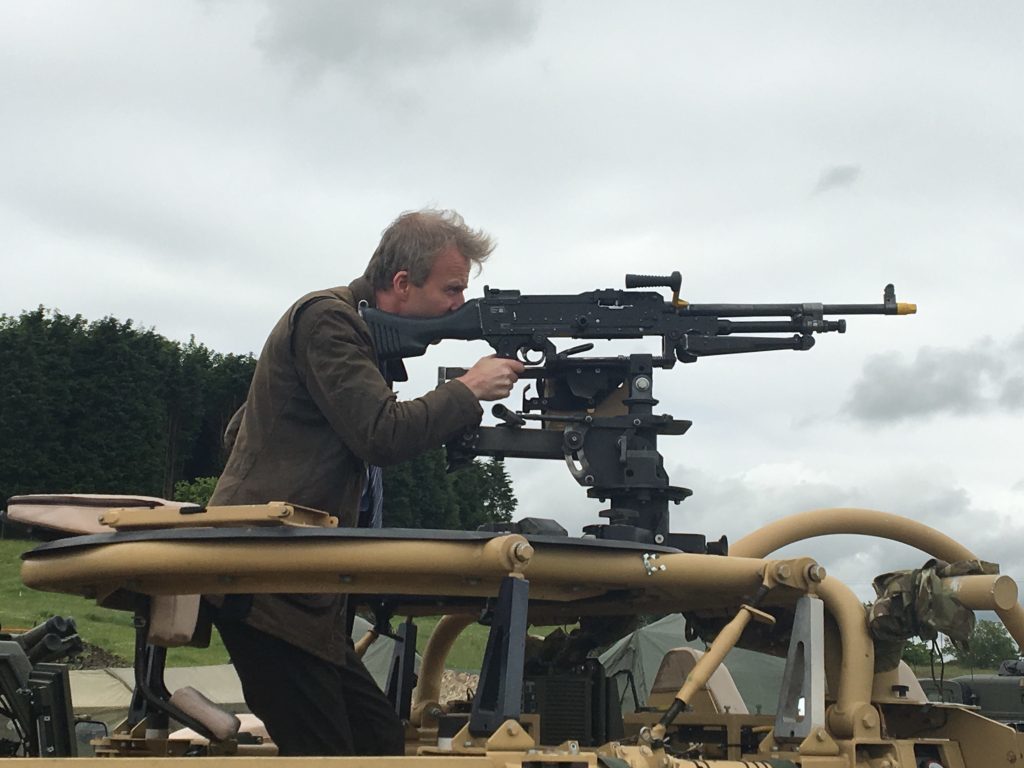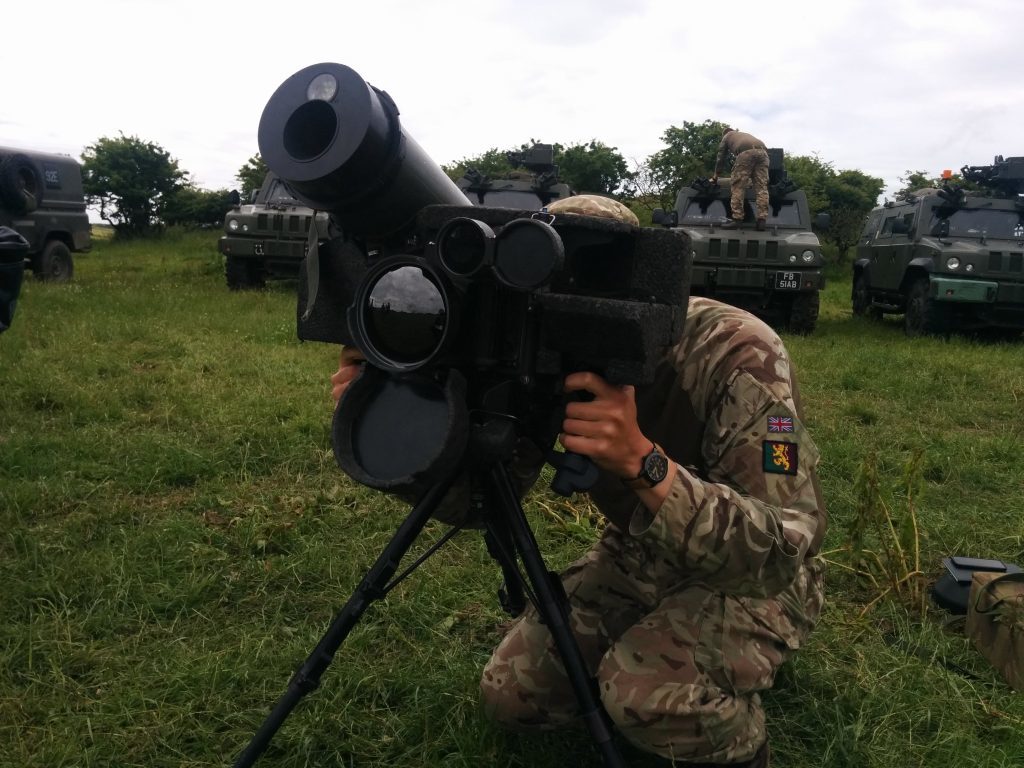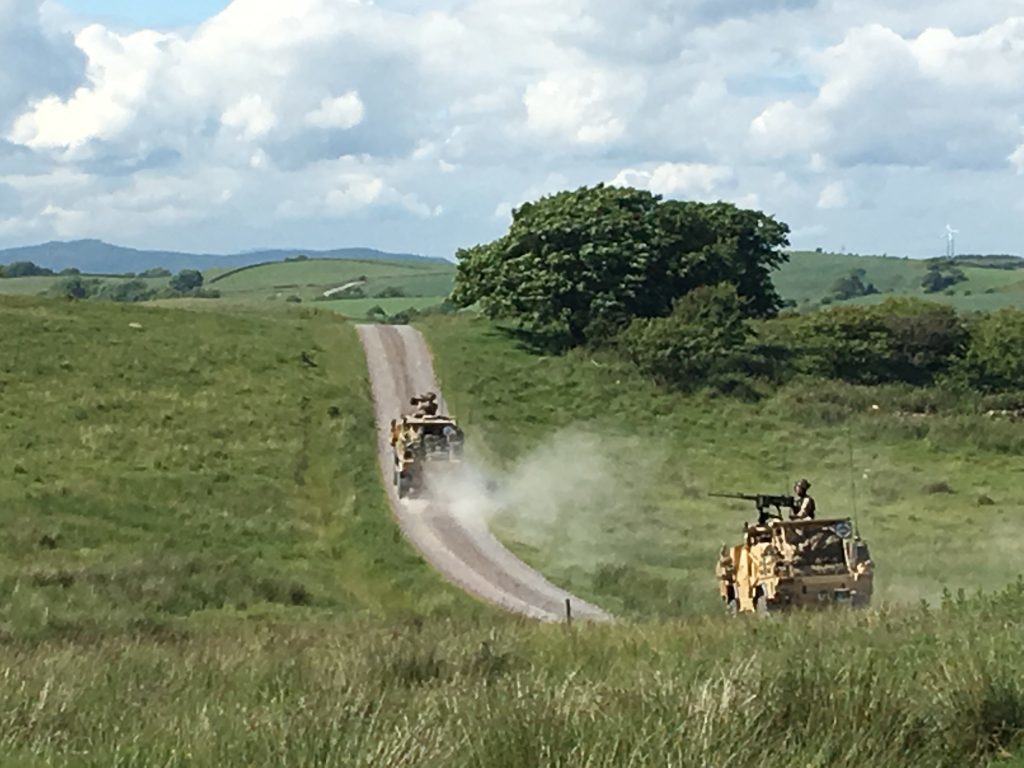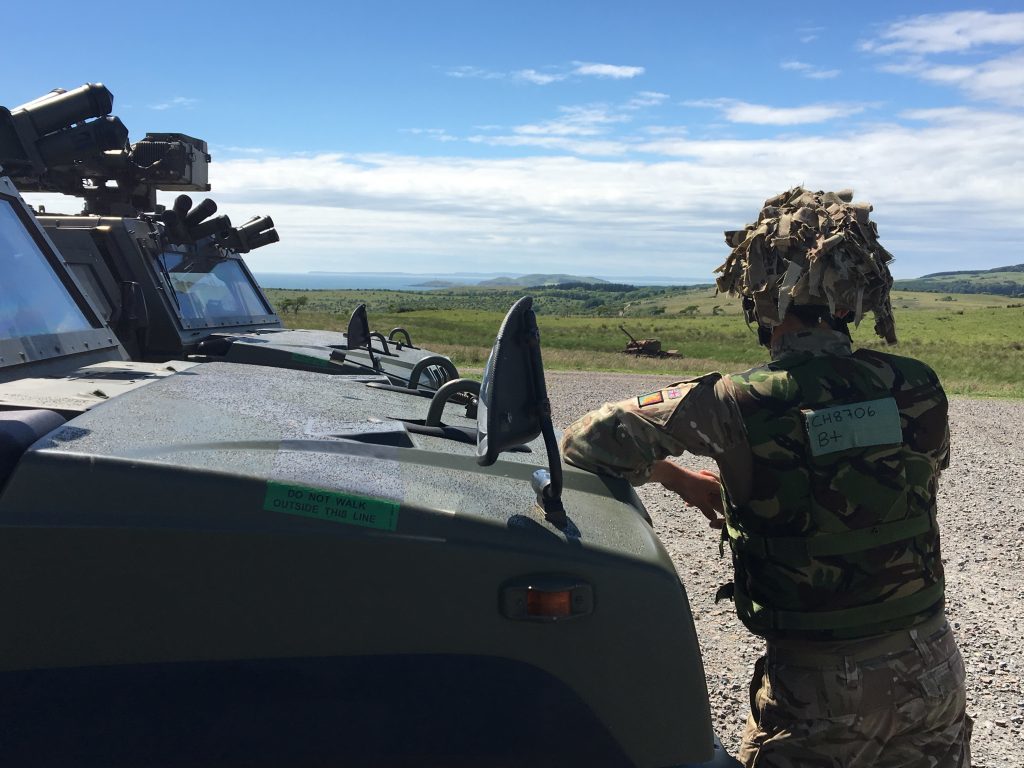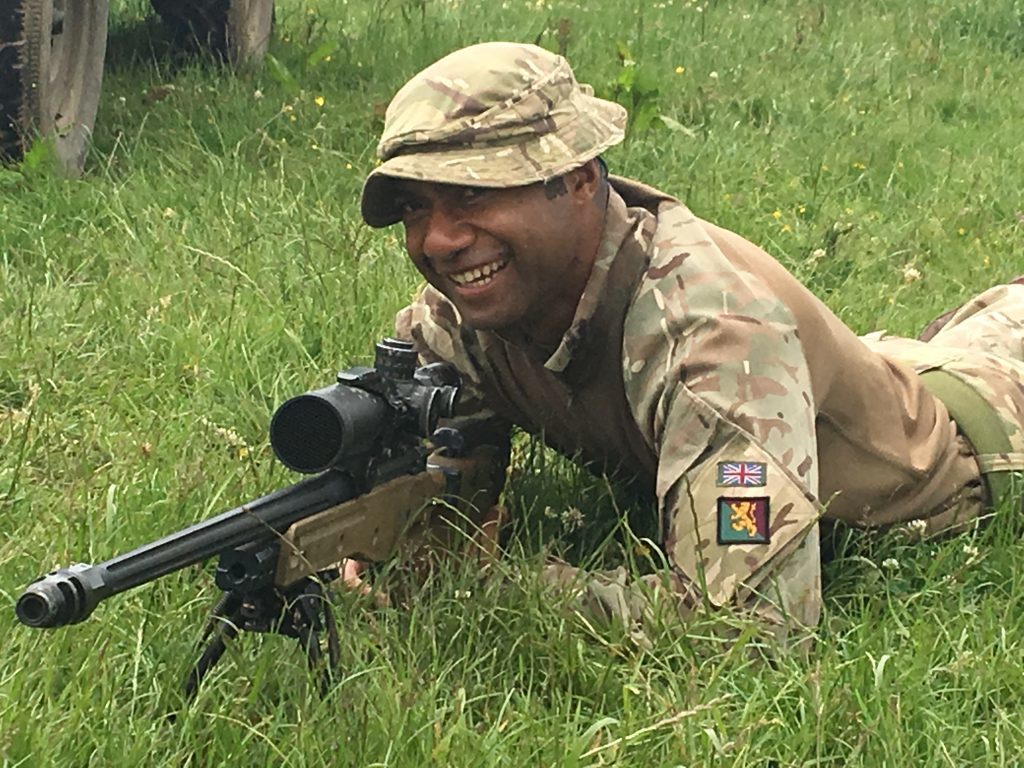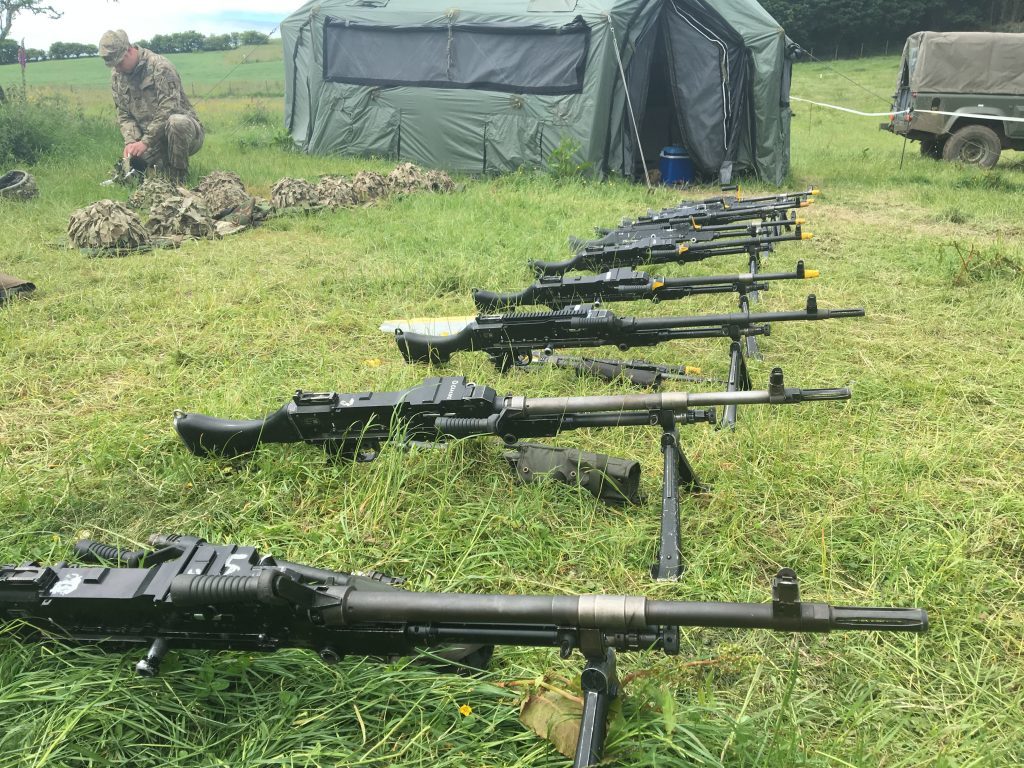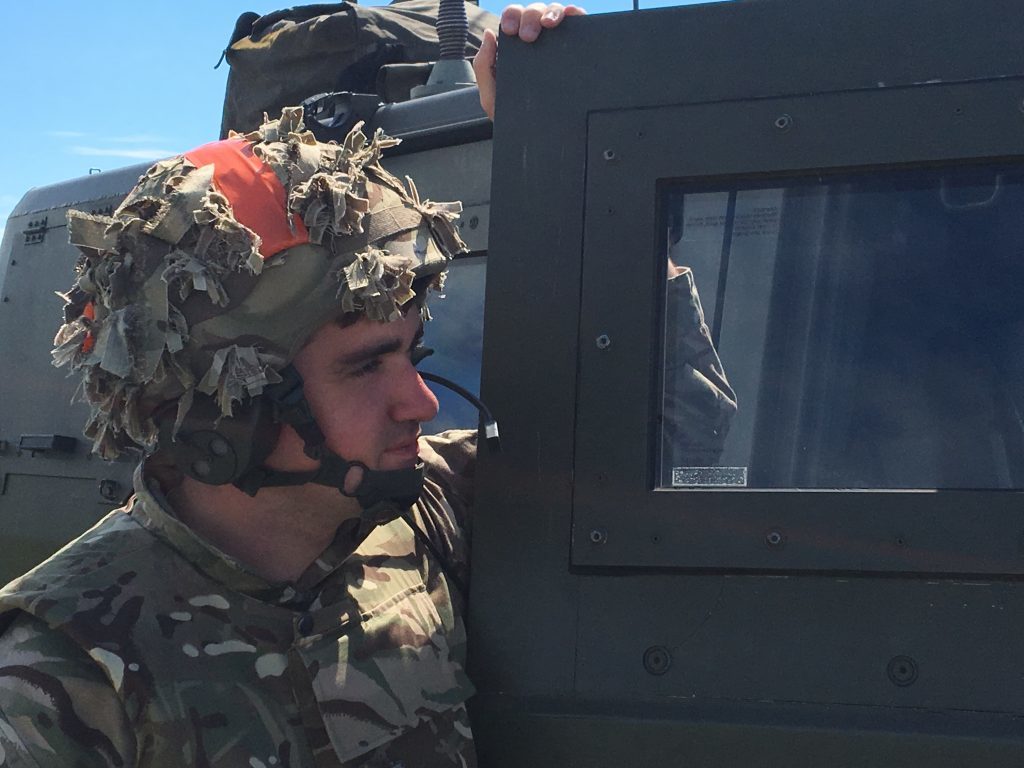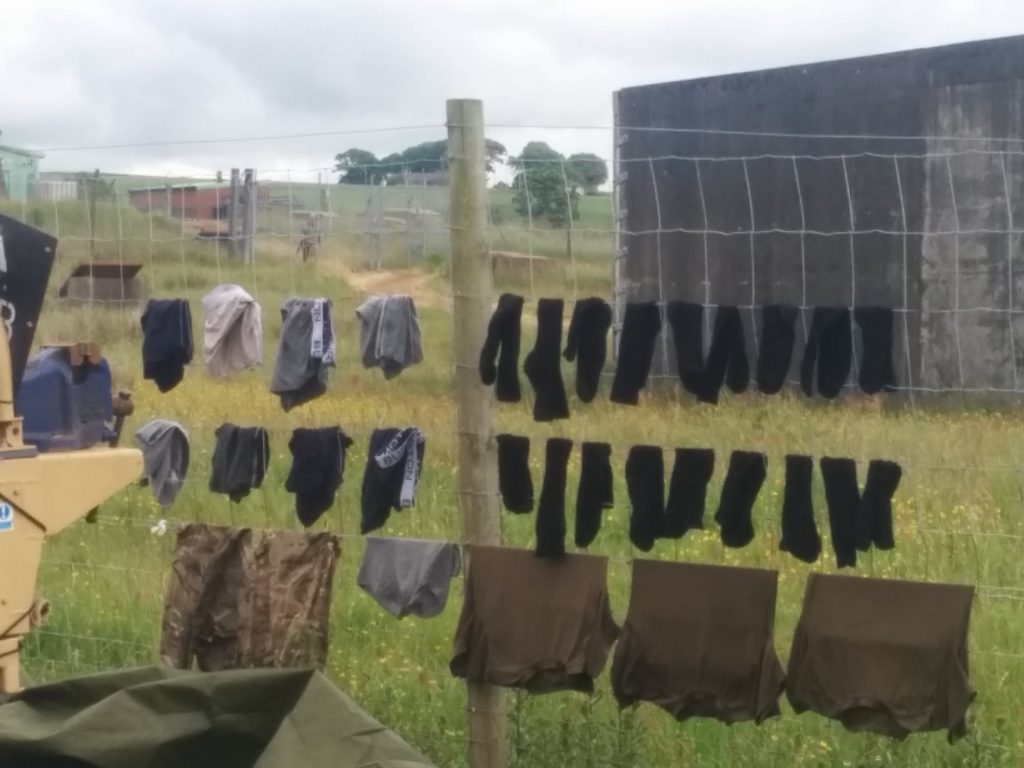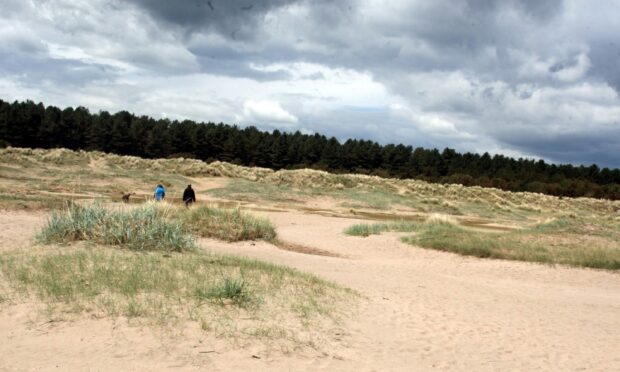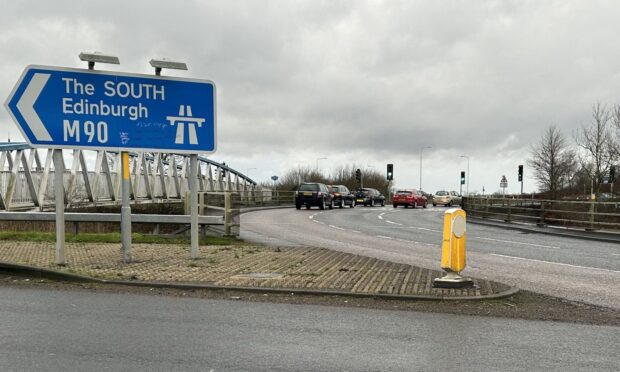Michael Alexander joined the Leuchars-based Royal Scots Dragoon Guards on a live fire exercise in Dumfries-shire as they demonstrated their state-of-the-art Jackal armoured reconnaissance vehicles.
Crammed into the back of one of the British Army’s Panther command vehicles, wearing a helmet and body armour, it’s a rather bumpy ride as we navigate rutted tracks and reach our vantage point on the brow of a grassy hill.
“These vehicles are not designed for comfort!” smiles Leuchars Station commander and commanding officer of the Royal Scots Dragoon Guards (SCOTS DG), Lieutenant Colonel Dom Coombes, who is seated up front.
It’s a fantastically warm afternoon at the Ministry of Defence’s Dundrennan Ranges near Kirkcudbright. The views across the Solway Firth are stunning and it’s even clear enough to see the Isle of Man. It’s a far cry from the “dismal” rain swept conditions a few days earlier, several soldiers assure me.
But we are not here for sightseeing or weather watching for that matter.
We are about to watch a SCOTS DG squadron, comprising 21 vehicles and 85 soldiers, conduct a live firing exercise which will simulate a realistic attack on a fictional village called Averton populated by insurgents.
The scenario dictates that the SCOTS DG, as the British Army’s lead light cavalry force, have been sent in on a reconnaissance mission to verify if reports of ethnic cleansing are true. Having spoken to tribal leaders and reported back to battlefield HQ that this is the case, a strategy has been drawn up and the decision has been taken to neutralise the enemy in a coordinated operation.
We watch through binoculars as the three-man Jackal crews move their armoured vehicles into position in the valley below. Then, as an explosion simulates a targeted air strike, the Jackals positioned just a hundred yards or so to our left open fire on the buildings with heavy calibre machine guns.
Several troops from the more distant vehicles then dismount and move in on foot to take-out the insurgents with their grenades and rifles.
From there the Jackals move on to their next position – to intercept an enemy supply point and a neighbouring village called Betwick with the final attack taking place at night.
It’s a simulation of course with the regiment being assessed on everything from tactics to communication to coordination and understanding of their environment.
But with real ammunition being used, and real tactics being deployed, it’s as near as it gets to a real battle without actually going to war. And crucially the exercise takes SCOTS DG to the cusp of being the British Army’s lead light cavalry regiment.
This means they will be in a high state of readiness for deployment anywhere in the world over the next year, if the British government sees fit.
In an exclusive interview with The Courier on the ranges, Lieutenant Colonel Coombes said that Exercise Wessex Storm was essential to bring the regiment to the “pinnacle” of its capabilities.
And the ability to run such challenging, realistic live fire exercises was what helped give the British Army such a high standing in the world.
The regiment, which moved back from Germany to Scotland for the first time in over 40 years, has undergone over nine months of intensive training on the Jackal, which is now culminating in this exercise.
After three weeks at the Dundrennan Ranges, the regiment’s 380 men and 80 vehicles taking part, have now headed south for a field exercise at the British Army’s main training area of Salisbury Plain where more tactical skills are deployed.
The second phase of the exercise involves their paired army reserve unit, The Scottish and North Irish Yeomanry, – including personnel based in Cupar – who have also been training on the vehicles.
The primary role of the vehicle is deep battle space reconnaissance, rapid assault and fire support – roles where mobility, endurance and manoeuvrability are important – and it has also been used for convoy protection.
The Royal Scots Dragoon Guards have traditionally been an armoured regiment, equipped with the Army’s Challenger 2 Main battle tanks.
However, their move back to Scotland has seen them re-role as light cavalry, at their base in Leuchars.
Lieutenant Colonel Coombes, who is also being tested for his planning skills, explained that the simulation for Salisbury Plain began before they even hit the road. It simulated them arriving in a place that the government has decided the British Army need to go into.
With an emphasis on tactics, Salisbury Plain is not featuring live firing.
But it utilises technology which the commanding officer describes as “like Laser Quest on steroids” whereby soldiers where vests with laser receivers and trackers.
Whilst weapons there fire blanks, laser technology is informing battlefield HQ who has been hit and medics will be deployed, and a replacement solider found, as if it were a real casualty situation.
“The way the army works,” adds Lieutenant Colonel Coombes, “is you have a three year cycle – a training year, an operational year and then a year when you do other tasks. This is our training year and is the pinnacle of our training.
“So from coming off tanks, moving from Germany back to Leuchars, training on this new kit, settling into our new home, this is the kind of pinnacle of it all which we’ll achieve in the next month or so if we get the go ahead. We’ll be one of the army’s lead forces.
“We’ll then have a bit of time off. Then we come back after the summer and see if we are required.”
It’s not just the media who are in attendance at Exercise Wessex Storm.
There are also members of the Royal Scots Dragoon Guards Regimental Association.
And it’s an opportunity for some of today’s highly trained SCOTS DG soldiers to show off modern state-of-the-art equipment – and potentially devastating firepower – to visiting troops from days gone by.
Corporal Dale Edwards, 38, a former tank driver, has been with SCOTS DG since 2007.
He’s now a Jackal instructor and is keen to talk about the reconnaissance vehicle’s manoeuvrability, agility and ability to see far and wide when manning it.
“Normally it would be used on operation in the desert. It’s perfect for the desert and good for reccy situations as well,” he says.
“It’s a very fast vehicle which can get you out of situations quickly. We have a great suspension system which has a variety of different settings – good for the desert. Also the turret on top can be fitted with three different weapons. It’s also less noisy than the Challenger tank which you could hear before you saw it. This you can hardly hear.”
Lance Corporal James Stevens, 25, has been with SCOTS DG for seven years.
He gives an overview of the heat-seeking Javelin anti-tank weapons system – a serious piece of mobile kit which fires a missile and “melts whatever it hits like a molten spear of metal”.
“It came into service in 2015 and was in service with the Americans before that,” he says, revealing it can achieve a range of 2500 metres in just 18 seconds.
“It comes in three key components. You have the command and launch unit (CLU) – basically the brains of the system. You have the tube assembly which fires the round, and you have the tripod. All in all it weighs 31kg.
“In a two man team one man will carry the CLU and a round. The other man will carry the tripod and a round. All the other kit like a thermal sheets, cabinets, claymores, rations, food, water, personal weapons, get divvied up with others. So all in all on exercise you are talking about 50 – 60kg per man. You are a big lumbering beast!”
Lance Corporal Stevens says the Javelin includes one of the best sighting systems in the British Army.
“You lock onto the target, and when fired it will kill whatever you have pointed it at,” he adds.
“The missile is a tandem warhead. So it has a pre-cursor charge- a cone shaped piece of copper which when it explodes out the way – burns in a liquid form and burns through whatever it hits.
“It was due to go out of service in 2017 but the army are keeping it because it’ll still defeat everything on the planet battlefield armour wise apart from a grenade thing the Russians are rumoured to have .
“So they’ve extended the shelf life and are working on Javelin 2. It’s getting smaller, lighter, and goes further with better range finders and data system where you can take pictures which will get sent via radio to command so they will see exactly what you are looking at.”
The exercise has also been the first opportunity to combine the role of snipers with the work of the wider SCOTS DG regiment.
Corporal Francis Tamoni, 31, a Jackal commander, from Fiji, is one of five snipers in the SCOTS DG.
Having previously worked in “random jobs” at home, he applied to a British Army recruitment advert nine years ago and was persuaded to join SCOTS DG because of the regiment’s reputation for rugby.
“Sniping is normally associated with infantry but it’s just the beginning for SCOTS DG,” he explains as he shows off the L1 583 – the standard issue British Army rifle which fires a 8.59 calibre magazine with a telescopic scope ranging from x5 to x25 magnification and a range of 900 metres.
“Normally snipers are picked as guys who are good at navigation, shooting, stalking and concealment.”
Corporal Christopher Crate, 28, from Ayr, has been in the army for nine years. He transferred to SCOTS DG in March 2013 having been made redundant from the army’s Pioneer Regiment.
Now a Panther commander, he explains the vital role of light cavalry as the first vehicle in the battle group to find the enemy and understand them. Information is then gathered and sent back to battlefield HQ who radio out.
“We are the first foot,” he says. “If it wasn’t for us, infantry couldn’t go out. So we are vital.
“We can also live for seven days out on the Jackals. Even though we dismount quite a lot we are still a mounted regiment. But we’re not infantry!”
Captain Chris Pyman has five years SCOTS DG experience. He served in Afghanistan during Operation Herrick 19 in 2013/14 when SCOTS DG were based in Kabul offering force protection to British military assets.
He said such training stands soldiers in good stead. However, with around 80% of SCOTS DG having Afghanistan experience, he points out that such experience can be very theatre specific. The need to constantly retrain is therefore essential.
“In Afghanistan for example,” he says, “if one person was injured it became about getting one person back. Whereas in a force on force situation you don’t do that because it puts everyone else at risk trying to get one person out.
“Experience is good, invaluable and essential but there is a tendency to get locked in on what you know.
“In Afghan there was one brigade broken down into little sub unit groups with all the joint forces together in that one environment. But let’s say Russia crosses into Ukraine and NATO says let’s get involved, there would be far fewer assets across a much wider area.
“People can’t get used to helicopter casualty evacuation as there was in Afghanistan because the helicopter won’t come in if there’s still fighting going on.”
